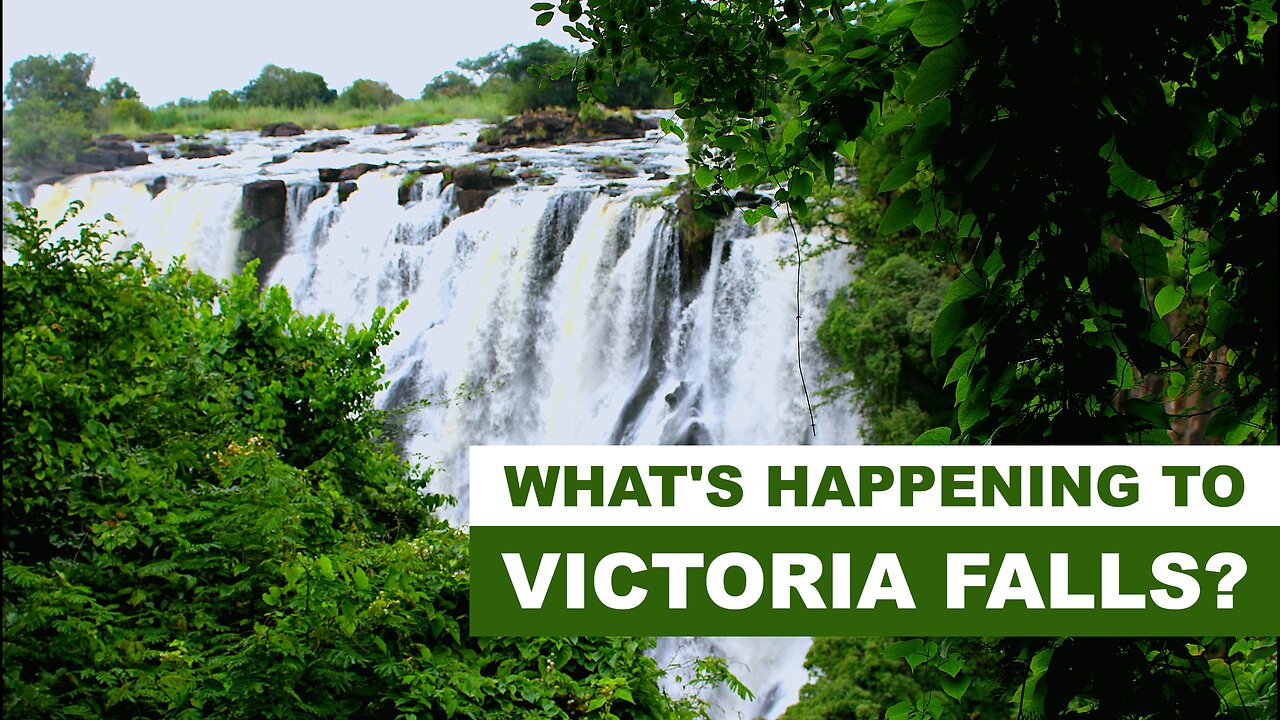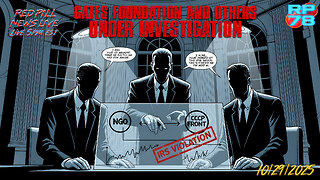Premium Only Content

Victoria Falls and the Zambezi: A Natural Wonder Facing an Uncertain Future
For video production services contact [email protected] https://www.inspiredrisk.com/
Victoria Falls, one of Earth’s most awe-inspiring wonders, sits at the border of Zambia and Zimbabwe. Known locally as Mosi-oa-Tunya, “The Smoke That Thunders,” this UNESCO World Heritage Site has captivated travelers and locals for generations with its immense wall of water plunging over the cliffs of the Zambezi River.
But like many of Earth’s great natural marvels, Victoria Falls is facing an uncertain future. Climate change, regional mismanagement, and aging infrastructure are putting pressure not only on the falls but also on the millions who rely on the Zambezi River for energy, agriculture, and livelihoods.
The Zambezi River’s flow has always shifted with the seasons. But in recent decades, scientists have noted more erratic and extreme fluctuations. Some years, water levels drop so low that the once-mighty falls are reduced to a trickle.
While some media headlines exaggerate these changes, long-term trends point to real concern. Climate change is likely intensifying natural cycles, making rainfall patterns in southern Africa less predictable and more extreme.
El Niño events, like the severe 2015–2016 episode, can drastically reduce rainfall across southern Africa, shrinking the Zambezi and exposing dry rock at the falls. But it’s not just El Niño. According to the IPCC, rainfall across the region has steadily declined over the past 50 years, while severe droughts have increased.
A 2018 "Nature Climate Change" study found the region is warming at 1.5 times the global average, disrupting rainfall and leading to both longer droughts and, paradoxically, more intense floods. A 2020 University of Cape Town study warns that this destabilizing pattern could worsen, threatening water and food security across southern Africa.
Unstable Zambezi water levels don’t just affect the falls, they impact entire nations. Zambia and Zimbabwe rely heavily on hydroelectric power from the Kariba Dam, built in 1959 for a combined population of just 6.7 million. Today, that number has soared to over 37.9 million.
When river levels drop, Kariba’s turbines can’t generate enough electricity, triggering massive power outages, sometimes up to 20 hours per day. These blackouts cripple industry, hurt public services, and scare off investors. In Zimbabwe, they’ve worsened an already fragile economy.
Climate change isn’t the sole issue. Chronic underinvestment in infrastructure and weak political leadership have compounded the crisis. Despite abundant sunlight, Zambia and Zimbabwe lag behind other African nations like Morocco and Egypt in developing solar power.
Egypt, for example, has expanded solar infrastructure with projects like the Benban Solar Park, while its economy grows. Zimbabwe, with its rich mineral resources, remains stuck. Zambia, burdened by over $18.5 billion in external debt, has struggled to modernize energy policy or infrastructure.
The Zambezi sustains rich ecosystems, wildlife, farming, and tourism. Hippos, crocodiles, and rare birds like the Taita falcon all rely on stable water flows. So do communities who fish and farm along the river.
Tourism, especially in towns like Livingstone and Victoria Falls, is vulnerable. Visitors travel for the spectacle, and when the falls are reduced, so too is tourism revenue, affecting local jobs and businesses.
The Zambezi flows through eight countries. Managing it requires strong regional cooperation. While institutions like ZAMCOM exist to coordinate efforts, limited funding and political will have hindered real progress. Without stronger collaboration, disputes over water use may rise as droughts intensify.
The future of Victoria Falls, and millions of lives, depends on bold action. Zambia and Zimbabwe must invest in modern, climate-resilient infrastructure. Hydropower alone won’t be enough. Diversifying with solar energy is essential.
Projects like Zambia’s Bangweulu Solar Park offer a glimpse of what’s possible. But these efforts must scale, with clear policies, transparency, and international support. Clean energy and modern infrastructure are critical not just for powering homes, but for protecting ecosystems and stabilizing economies.
Victoria Falls is more than a scenic wonder, it’s a symbol of nature’s power and fragility. As climate change disrupts the Zambezi’s flow, seasonal fluctuations grow more extreme. But there’s still time to act.
By investing in clean energy, upgrading infrastructure, and building regional cooperation, we can protect this extraordinary place, and secure a more sustainable future for the people and wildlife who depend on it.
Before the roar of Mosi-oa-Tunya fades into a whisper, we must act.
-
 LIVE
LIVE
Stephen Gardner
25 minutes ago🔥Democrats are PANICKING after losing this FIGHT!!
471 watching -
 LIVE
LIVE
Red Pill News
1 hour agoNGO’s Caught Funding CCP on Red Pill News Live
1,507 watching -
 LIVE
LIVE
LFA TV
19 hours agoLIVE & BREAKING NEWS! | WEDNESDAY 10/29/25
1,222 watching -
 1:12:02
1:12:02
vivafrei
2 hours agoThe Rise of Mamdami & the Fall of New York! Ice Activits ARRESTED! Ostrich Farm UPDATE! & More!
72.9K40 -
 16:31
16:31
Clintonjaws
6 hours ago $2.61 earnedICE Rioters Getting Arrested - This Is Priceless
4.07K7 -
 1:05:34
1:05:34
The Quartering
3 hours agoJob Economy Collapsing, Food Wars Start Friday & The War On Tucker Carlson
105K34 -
 LIVE
LIVE
Barry Cunningham
3 hours agoPRESIDENT TRUMP EVENTS IN SOUTH KOREA | MIKE JOHNSON SHUTDOWN DAY 29 PRESSER | MORE NEWS!
1,729 watching -
 LIVE
LIVE
The HotSeat
1 hour agoAmerican Politics Are Really NOT This HARD!!!!
581 watching -
 2:19:30
2:19:30
Side Scrollers Podcast
6 hours agoAngry Joe’s TDS/Halo Meltdown + Console War is OVER + Twitch Staff FIRED + More | Side Scrollers
45.6K9 -
 1:13:46
1:13:46
DeVory Darkins
4 hours agoDemocrat Voters get CRUSHING NEWS as Trump celebrates MAJOR TRADE DEAL
129K58